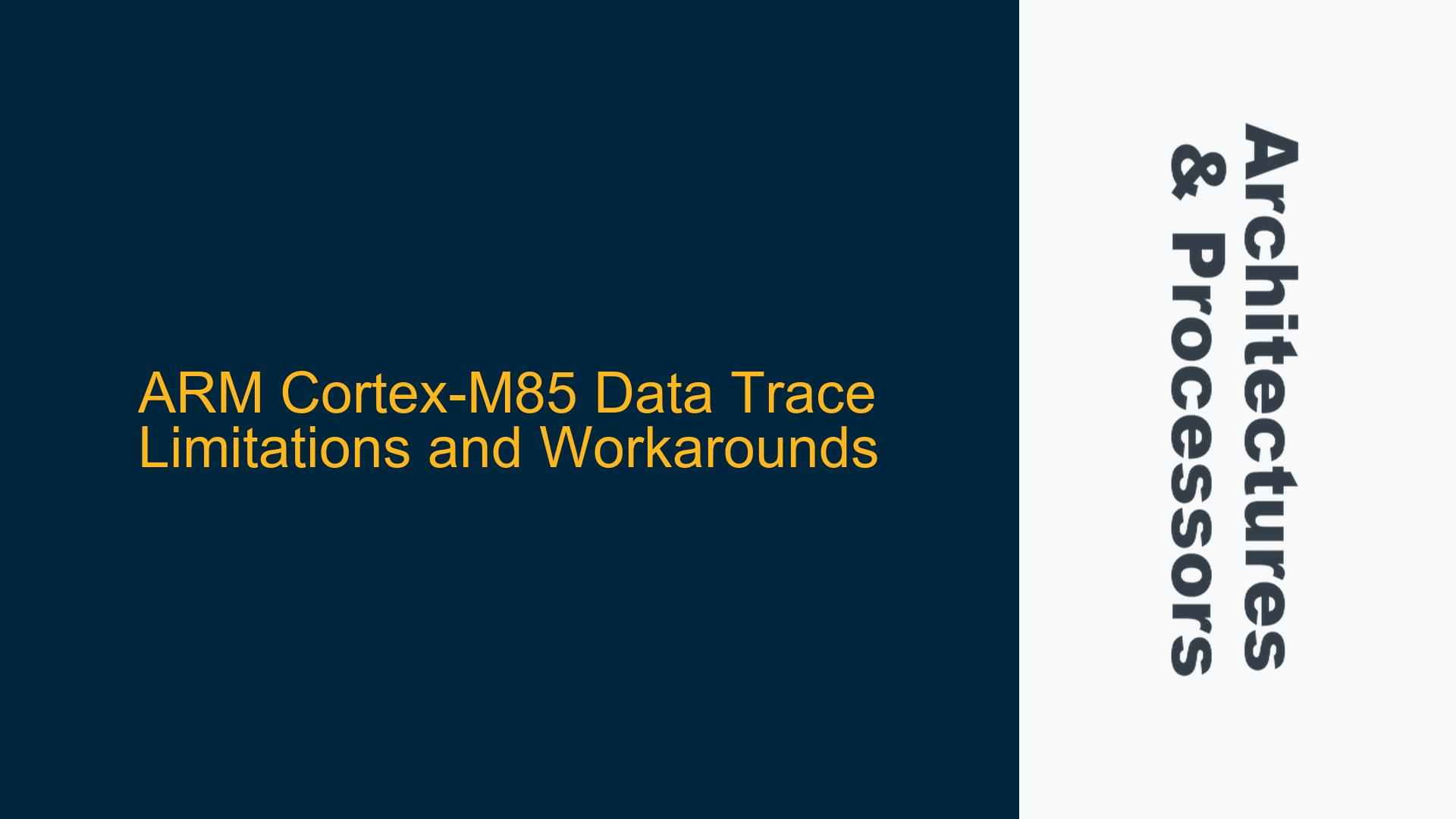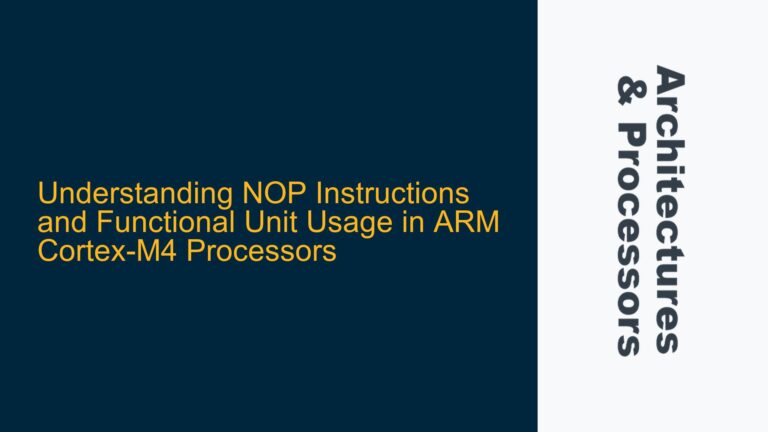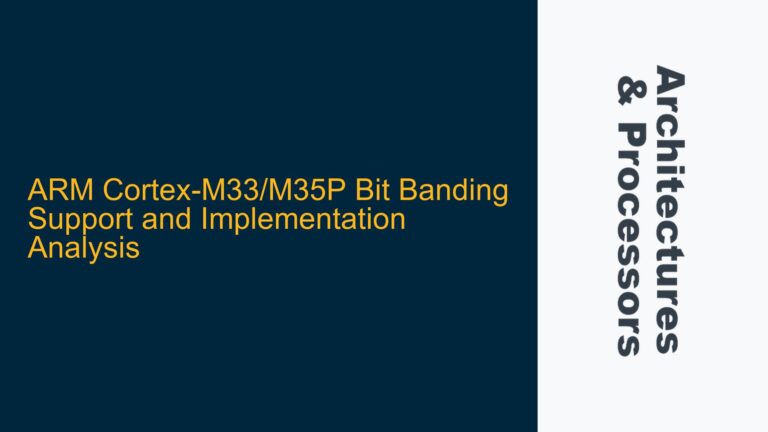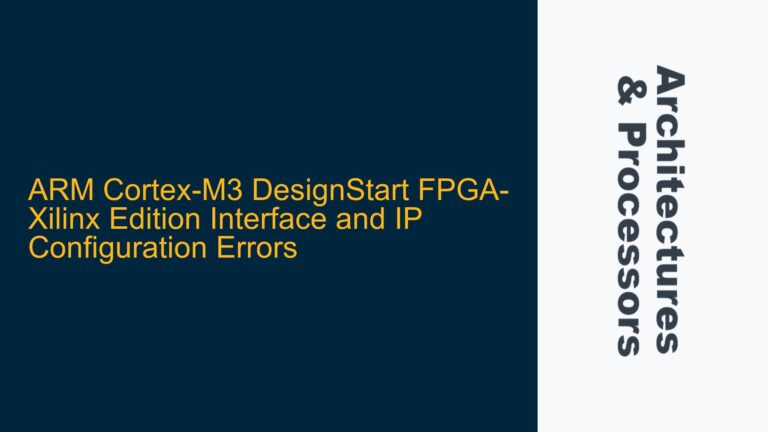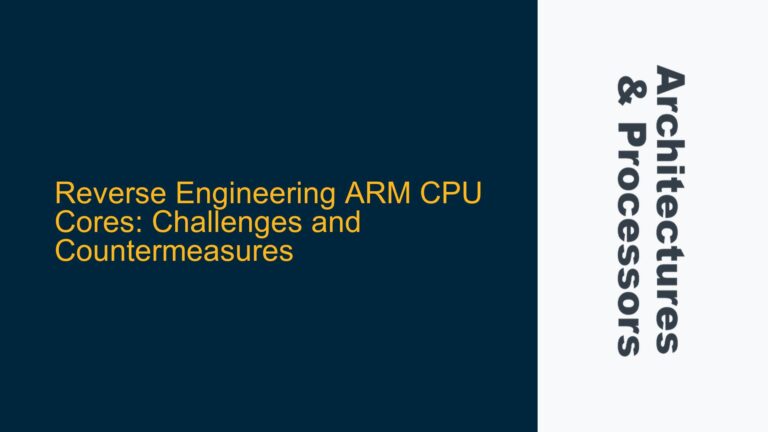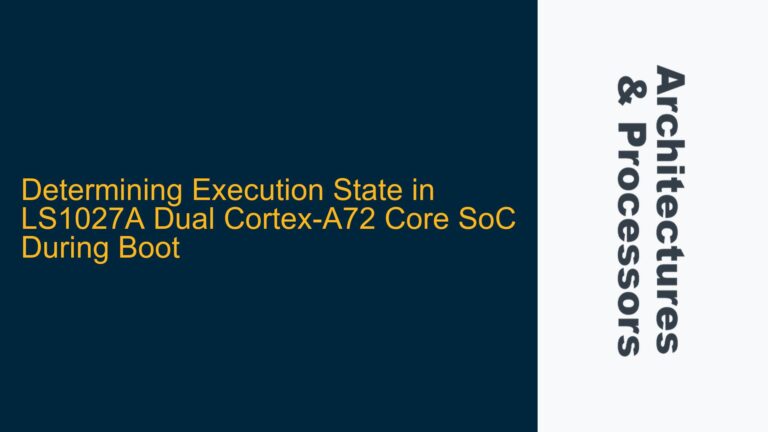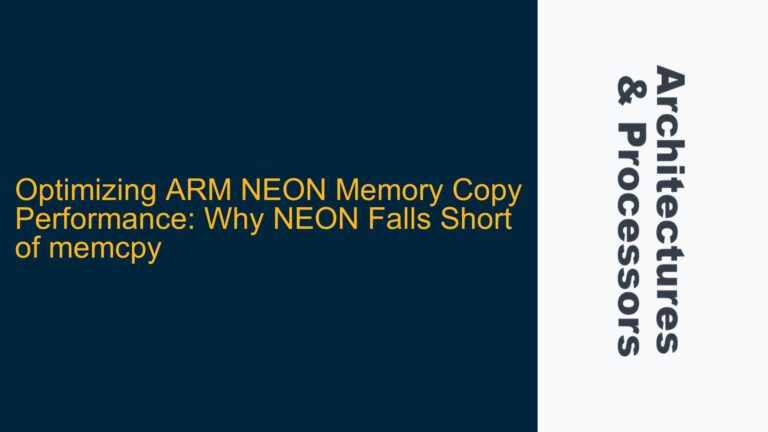ARM Cortex-M85 ETM Data Trace Unsupported: Understanding the Limitation
The ARM Cortex-M85 processor, a high-performance embedded processor designed for AI and machine learning applications, integrates the Arm CoreSight ETM-M85 (Embedded Trace Macrocell) for instruction tracing. However, a critical limitation arises when attempting to perform data tracing. The ETM-M85, as documented in the "Arm CoreSight ETM-M85 Revision: r1p0 Technical Reference Manual," does not support data trace functionality. This means that while developers can trace the execution flow of instructions, they cannot directly trace data accesses, such as memory reads and writes, using the ETM-M85.
The absence of data trace support in the ETM-M85 is a significant constraint for developers who rely on data tracing for debugging and performance analysis. Data tracing is particularly valuable in scenarios where understanding the interaction between software and hardware is crucial, such as in real-time systems, memory optimization, and fault diagnosis. Without data trace capabilities, developers must rely on alternative methods to achieve similar insights.
The ETM-M85 is designed primarily for instruction tracing, providing detailed information about the program flow, including branch tracing, exception handling, and function calls. This is achieved through the generation of trace packets that capture the execution path of the processor. However, the ETM-M85 does not generate trace packets for data accesses, which limits its utility in scenarios where data flow analysis is required.
To understand why the ETM-M85 lacks data trace support, it is essential to consider the design goals and trade-offs made during its development. The Cortex-M85 is optimized for high-performance embedded applications, with a focus on AI and machine learning workloads. These workloads often involve complex data processing pipelines, where instruction tracing is more critical for performance analysis and optimization. Data tracing, while useful, adds significant complexity and overhead to the trace infrastructure, which may not align with the primary use cases of the Cortex-M85.
Despite this limitation, the Cortex-M85 and its ETM-M85 still provide robust debugging capabilities through instruction tracing. Developers can use the ETM-M85 to gain insights into the execution flow of their applications, identify performance bottlenecks, and debug complex software issues. However, for scenarios where data tracing is indispensable, alternative approaches must be considered.
Possible Causes: Why ETM-M85 Lacks Data Trace Support
The absence of data trace support in the ETM-M85 can be attributed to several factors, including architectural design decisions, performance considerations, and the intended use cases of the Cortex-M85 processor. Understanding these factors is crucial for developers seeking to work around this limitation and achieve their debugging and analysis goals.
One of the primary reasons for the lack of data trace support in the ETM-M85 is the architectural design focus on instruction tracing. The Cortex-M85 is designed to deliver high performance in embedded applications, particularly those involving AI and machine learning. These applications often require detailed instruction tracing to optimize performance, identify bottlenecks, and ensure correct execution flow. Data tracing, while valuable, is not always a priority in these scenarios, as the primary focus is on the execution of complex algorithms and data processing pipelines.
Another factor is the complexity and overhead associated with data tracing. Data tracing requires capturing and transmitting a significant amount of information, including memory addresses, data values, and access types (read/write). This can lead to increased trace bandwidth requirements, which may not be feasible in resource-constrained embedded systems. The ETM-M85 is designed to provide efficient instruction tracing with minimal overhead, and adding data trace support would likely increase the complexity and cost of the trace infrastructure.
Performance considerations also play a role in the decision to exclude data trace support. The Cortex-M85 is optimized for high-performance applications, and any additional trace functionality must be carefully balanced against the impact on processor performance. Data tracing can introduce additional latency and resource contention, which may degrade the overall performance of the system. By focusing on instruction tracing, the ETM-M85 can provide valuable debugging information without compromising the performance of the Cortex-M85.
The intended use cases of the Cortex-M85 also influence the design of the ETM-M85. The Cortex-M85 is targeted at applications such as AI, machine learning, and real-time control, where instruction tracing is often more critical than data tracing. In these applications, understanding the execution flow and identifying performance bottlenecks are key to optimizing system performance. Data tracing, while useful, is not always necessary for achieving these goals.
Finally, the decision to exclude data trace support may also be influenced by market and product segmentation considerations. ARM offers a range of processors with varying levels of trace support, and the Cortex-M85 is positioned as a high-performance embedded processor with a focus on instruction tracing. Developers requiring data trace functionality may need to consider other ARM processors or alternative debugging approaches.
Implementing Alternative Data Tracing Methods on Cortex-M85
While the ETM-M85 does not support data tracing, developers can implement alternative methods to achieve similar functionality. These methods involve leveraging other features of the Cortex-M85 and its ecosystem, as well as employing external tools and techniques. Below, we explore several approaches to data tracing on the Cortex-M85, along with their advantages and limitations.
Using the Instrumentation Trace Macrocell (ITM) for Data Tracing
The Cortex-M85 includes an Instrumentation Trace Macrocell (ITM), which can be used to generate trace data for software-defined events. The ITM allows developers to insert trace points in their code, which can be used to log data accesses, memory addresses, and other relevant information. While the ITM is not a direct replacement for data tracing, it can be used to achieve similar results with some additional effort.
To use the ITM for data tracing, developers must manually insert trace points in their code at locations where data accesses occur. These trace points can be used to log the memory address, data value, and access type (read/write) to the ITM. The ITM then generates trace packets that can be captured and analyzed using a debug probe and trace analysis tools.
One advantage of using the ITM for data tracing is that it provides flexibility in terms of what data is traced and when. Developers can choose to trace only specific data accesses or memory regions, reducing the amount of trace data generated. However, this approach requires significant manual effort to insert trace points and manage the trace data, which may not be feasible for large or complex applications.
Leveraging the Memory Protection Unit (MPU) for Data Access Monitoring
The Cortex-M85 includes a Memory Protection Unit (MPU) that can be used to monitor and control access to specific memory regions. While the primary purpose of the MPU is to enforce memory protection and access permissions, it can also be used to generate exceptions or interrupts when specific memory accesses occur. These exceptions can be used to log data accesses and implement a form of data tracing.
To use the MPU for data access monitoring, developers must configure the MPU to generate exceptions or interrupts for specific memory regions. When a data access occurs, the MPU triggers an exception, and the exception handler can log the memory address, data value, and access type. This information can then be used to reconstruct the data trace.
One advantage of using the MPU for data access monitoring is that it does not require manual insertion of trace points in the code. However, this approach is limited by the number of memory regions that can be monitored simultaneously, as the MPU has a finite number of regions that can be configured. Additionally, the overhead of handling exceptions or interrupts may impact the performance of the system.
Employing External Trace Tools and Probes
In addition to the built-in trace features of the Cortex-M85, developers can use external trace tools and probes to achieve data tracing. These tools typically connect to the Cortex-M85 via a debug interface, such as SWD or JTAG, and capture trace data directly from the processor. External trace tools often provide more comprehensive trace capabilities, including data tracing, than the built-in trace features of the Cortex-M85.
One example of an external trace tool is the Arm CoreSight Trace Memory Controller (TMC), which can be used to capture trace data from multiple sources, including the ETM, ITM, and other trace components. The TMC can be configured to capture data trace information, providing a more complete view of the system’s behavior.
Another option is to use a logic analyzer or oscilloscope to capture data accesses directly from the memory bus. This approach requires connecting the logic analyzer to the memory bus and configuring it to capture the relevant signals. While this method can provide detailed data trace information, it is often complex and requires specialized hardware and expertise.
Combining Software and Hardware Techniques for Comprehensive Data Tracing
For developers requiring comprehensive data tracing capabilities, a combination of software and hardware techniques may be the most effective approach. This involves using the ITM and MPU for software-based data tracing, combined with external trace tools for hardware-based data tracing. By combining these methods, developers can achieve a more complete view of the system’s behavior and identify performance bottlenecks and software issues.
For example, developers can use the ITM to trace specific data accesses and the MPU to monitor critical memory regions. External trace tools can then be used to capture additional trace data, such as memory bus activity and peripheral accesses. This combined approach provides a more comprehensive data trace, enabling developers to analyze the system’s behavior in greater detail.
Best Practices for Data Tracing on Cortex-M85
When implementing data tracing on the Cortex-M85, developers should follow best practices to ensure effective and efficient tracing. These best practices include:
-
Define Clear Tracing Objectives: Before implementing data tracing, developers should define clear objectives for what they want to achieve. This includes identifying the specific data accesses to be traced, the level of detail required, and the impact on system performance.
-
Use Selective Tracing: To minimize the impact on system performance, developers should use selective tracing to capture only the most relevant data accesses. This can be achieved using the ITM or MPU to trace specific memory regions or data types.
-
Optimize Trace Data Management: Data tracing can generate a large amount of trace data, which must be managed effectively. Developers should use efficient data logging techniques and consider using external trace tools with large trace buffers to capture and store trace data.
-
Analyze Trace Data Effectively: Once trace data is captured, developers must analyze it effectively to identify performance bottlenecks and software issues. This may involve using trace analysis tools to visualize and interpret the trace data.
-
Consider System Impact: Data tracing can impact system performance, particularly when using software-based methods such as the ITM or MPU. Developers should carefully consider the impact of tracing on system performance and optimize their tracing implementation to minimize overhead.
By following these best practices, developers can effectively implement data tracing on the Cortex-M85 and achieve their debugging and analysis goals, despite the limitations of the ETM-M85.
In conclusion, while the ARM Cortex-M85’s ETM-M85 does not support data tracing, developers can employ alternative methods to achieve similar functionality. By leveraging the ITM, MPU, and external trace tools, developers can implement comprehensive data tracing and gain valuable insights into their system’s behavior. Understanding the limitations and trade-offs of each method is crucial for selecting the most appropriate approach for a given application. With careful implementation and analysis, developers can overcome the limitations of the ETM-M85 and achieve effective data tracing on the Cortex-M85.
